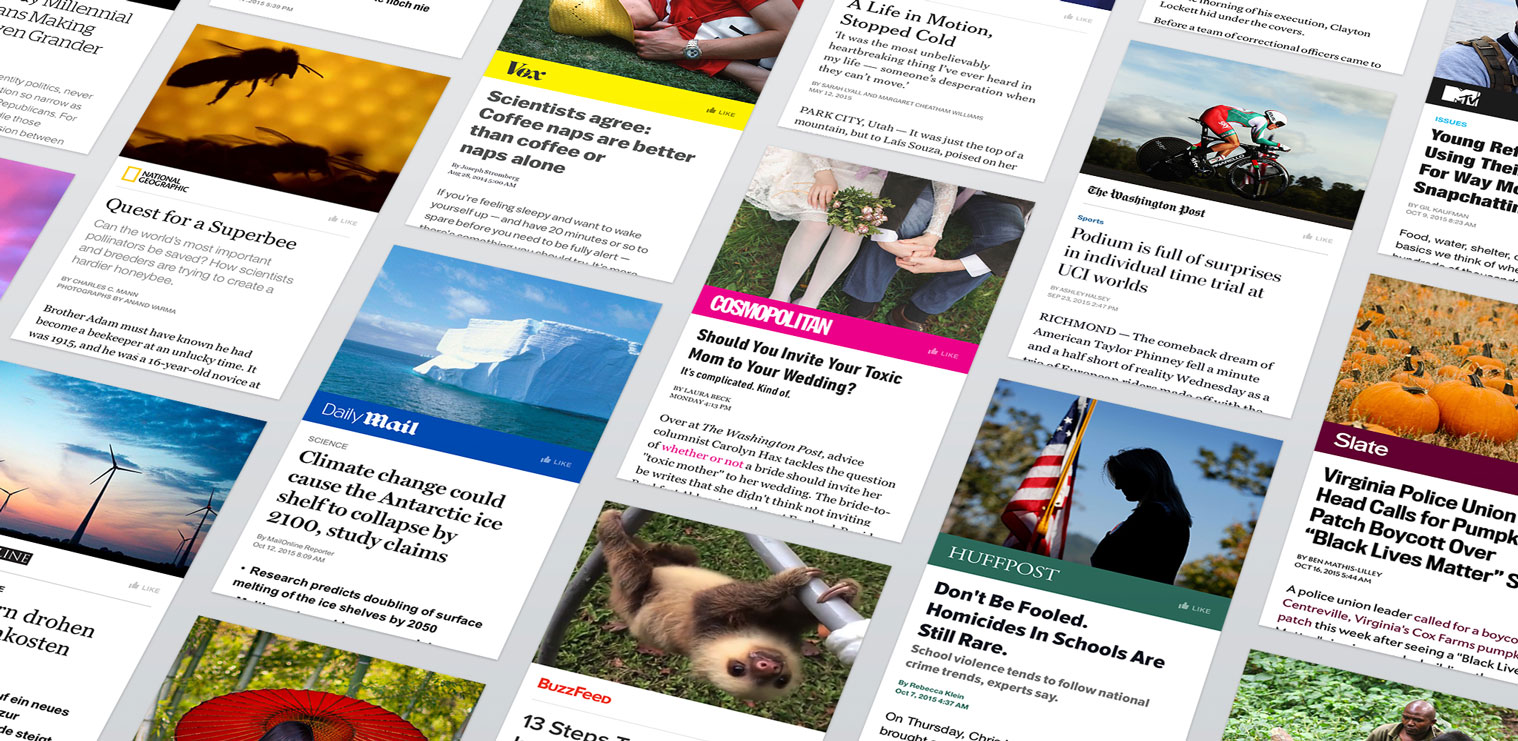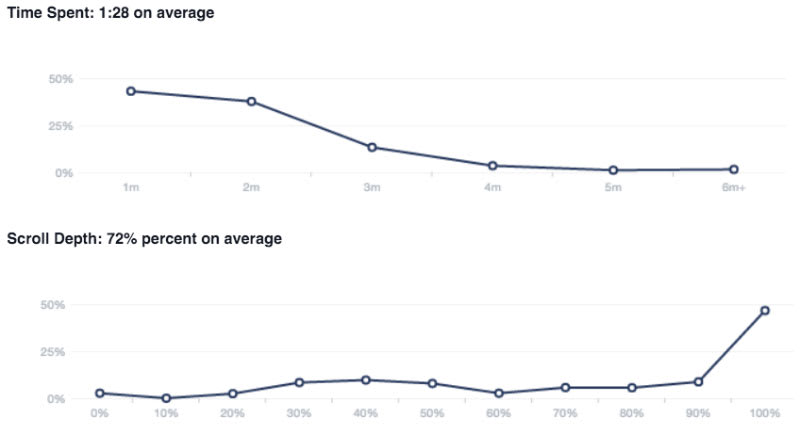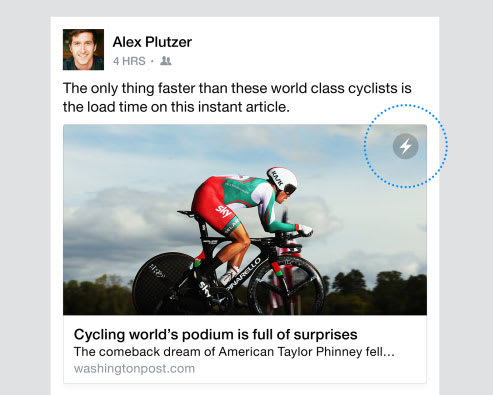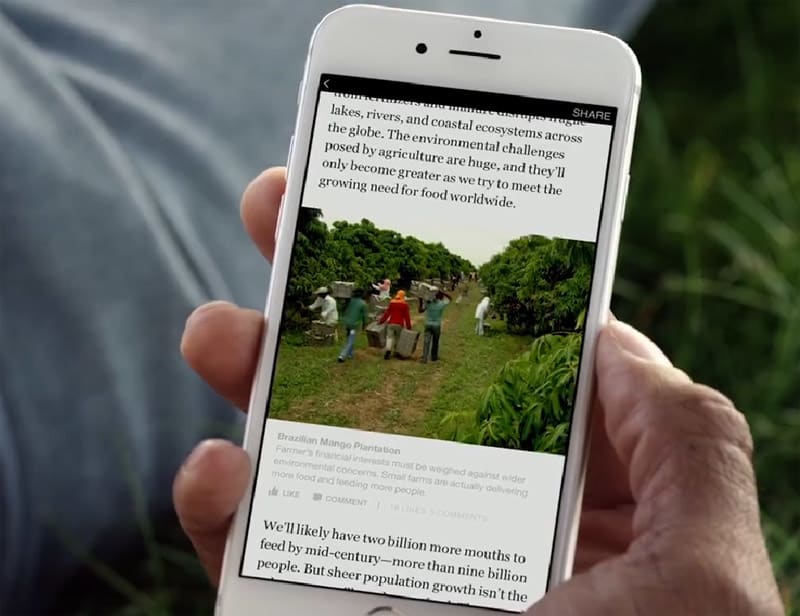12 Facebook Instant Articles insights for WordPress content creators
 On April 12, Facebook is expanding their in-app Instant Articles program—which delivers lightweight, instantly loading articles—to all publishers. All content creators, from enterprises posting corporate news to your neighbor’s food blog, can start taking advantage of the benefits of Facebook Instant Articles to maximize engagement with Facebook’s 1.5 billion users.
On April 12, Facebook is expanding their in-app Instant Articles program—which delivers lightweight, instantly loading articles—to all publishers. All content creators, from enterprises posting corporate news to your neighbor’s food blog, can start taking advantage of the benefits of Facebook Instant Articles to maximize engagement with Facebook’s 1.5 billion users.
We see Instant Articles as another step toward the content management system (CMS) as the hub for creating and delivering content. Content creators are distributing to many interfaces and channels: HTML/CSS front ends, mobile apps, third party sites, Google AMP, Apple News feeds…even print publications! Rapidly evolving content distribution punctuates the benefits of an open and well-maintained CMS. WordPress adopters can rapidly benefit from channels like AMP and Instant Articles thanks to quickly released and well supported open source modules, circumventing the development overhead of a home grown platform or the long roadmap of a niche commercial CMS, and without surrendering their content to closed platforms like Medium.
Seamless integrations with platforms like Instant Articles is why 10up so fervently advocates for WordPress and the open web. And so, upon Facebook’s 12th anniversary, here are 12 key insights for publishers using WordPress and preparing for Facebook Instant Articles.
1. There’s a plugin for that
Automattic released a free plugin that makes it easy to set WordPress up for Instant Articles. With an official WordPress.org plugin repository release coming soon, content creators using WordPress can install the plugin and take the first step toward publishing Instant Articles-compliant content.
2. Developers can extend the WordPress plugin
By default, Automattic’s Instant Articles plugin distributes WordPress “posts” (articles) to Facebook. Developers can extend the plugin’s default behavior to incorporate other content (i.e. post types) or address other custom editorial needs. For instance, developers can accommodate publishers that might want more granular control over which stories are distributed, may want alternative “linkbait” titles for Facebook, or might even want to append extra content, such as a call to action targeting Facebook readers. Publishers who want to control ad positions will need to customize the way the plugin outputs the story (otherwise automatically determined by Facebook – see #8).
3. Powered by RSS
Facebook leverages Real Simple Syndication (RSS) to import content into the Instant Articles format. Facebook requests the RSS feed every three minutes, so that your content is always up-to-date; new articles and updated content is served without any extra administrative effort or Instant Articles disruption to existing editorial workflows.
4. RSS feeds must be approved
Once created, your Instant Articles RSS feed needs to be submitted to Facebook for approval. To do so, log into Facebook and, from a publication’s Facebook Page, click Settings, then select Instant Articles from the left-side menu. The submitted feed is reviewed for errors within 24-48 hours. Any errors found are flagged on the RSS configuration screen; all errors must be remediated to continue. Note that feeds must contain at least 50 articles.
5. Set up a “development feed” for testing
Publishers can define two Instant Articles feeds per Facebook page: a development feed, which is only viewable by page owners to test and preview changes, and a content feed, which is used to serve public content. In practice, most publishers will want to point the development feed to their staging or testing sites, where they can experiment with changes to the feed itself and its presentation, while also ensuring that other site changes do not incidentally affect Instant Articles.
6. The design balances minimal customization with consistency
Instant Articles offers some minimal customization of the article presentation, maintaining a consistent experience for Facebook readers. For instance, Facebook automatically scales typography based on device screen sizes, keeping publishers focused on content. Publishers are restricted to a predetermined choice of fonts; Georgia and Helvetica Neue offer a highly legible serif and sans serif option.
Some other customizable design elements include:
- The logo, including the background color;
- Common journalistic elements—such as titles, subtitles, kickers, and bylines—can all carry their own font treatments;
- HTML body copy formatting such as bolding, italicizing, inline links, and headers using the H1 and H2 tags;
- Pull quotes have optional attributions, and their own color and typeface settings;
- Article footers for supplemental material such as credits, acknowledgments, or notes.
7. Images and videos have custom treatments
Publishers can embed images and videos. However, when either is used as header art (the visual atop a story) each are limited to a 4:3 aspect ratio. Facebook advises that, “more horizontal image ratios, such as 16:9, render in a reduced overall size, to fit the screen.” Likewise, vertical banners will not be accepted at this time.
When used inside of the story, images and videos support captions containing elements like titles, descriptions, and credits. Each text element supports distinct font sizes, available in small, medium, large, or extra-large. These size demarcations change relative to a reader’s screen size. Additionally, each text element can have individually set font types and colors. Publishers can position the entire caption below, on top of, or above its parent image.
8. Full ad support; and avoids content blockers!
Instant Articles enables publishers to embed their own ad networks, without any limitations on which networks are supported. That said, there are restrictions on ad types: interstitials are not allowed, for example. Any ad can be placed manually within an article, so long as it adheres to Facebook’s ad density guidelines. Facebook also offers automatic ad positioning, ensuring Facebook’s ad algorithm places ads for publishers to optimize the reading experience. For custom ad placement, publishers using the WordPress plugin will need support from their developer.
Additionally, Facebook is offering publishers the option to monetize any unsold ad inventory with Facebook’s built-in Audience Network.
Robust support for monetization is a huge opportunity for publishers, especially considering that Instant Articles is part of Facebook’s native app, and therefore not subject to ad blockers that disrupt the mobile experience within iOS 9.
9. Track everything with your analytics, and theirs

Instant Articles comes packaged with Dashboard Analytics, which tracks a limited set of metrics:
- the number of clicks an article receives;
- the time spent reading the content;
- and how far articles were scrolled before closing.
These insights alone will offer publishers considerable data.
But, since publishers can embed any HTML/JavaScript tracking code within an iframe, they can continue to employ their analytics platform of choice, with a few caveats:
- As the code is embedded in an iframe, custom event tracking will not work.
- It’s possible that some analytics platforms will be unable to parse the embedded data cleanly.
10. Marked for success
Once publishers’ RSS feeds are working, any published article shared on Facebook’s mobile app will be replaced with its Instant Articles version, denoted by an overlaying “bolt” icon. As more readers begin to equate this badge with the clean, high performance reading experience of Instant Articles, this iconography is likely to garner more clickthroughs and greater consumption of your content.

11. More ways to engage
Publishers can add Facebook’s likes and comments functionality to every image within the story, making for even more frictionless content sharing and engagement.

12. Immersive interactive features
Unlike Google’s AMP, which delivers a faster experience by sacrificing code-heavy features, Instant Articles supports several interactive elements inside stories. Since articles are rendered within Facebook’s controlled app environment, Instant Articles doesn’t suffer from the performance limitations of browser scripting.
Publishers can embed images, videos, embeddable content from popular social networks (like a Twitter timeline), maps, and interactive graphics like data visualizations or animated infographics (using the standardized HTML5 <figure> element) to capture a reader’s attention.
Publishers can include videos with an autoplay option, activated once the reader scrolls it into view. And with the additional looping option, content creators can set an ambient mood by having video repeat in the background.

Readers can explore images by simply tapping the screen, which expands the photo and zooms in on details. When horizontal images spill off-screen, readers can tilt to explore by intuitively moving their phone from side to side. Geotagged images display a globe icon that, when tapped, activates a rotating 3D map.
* * * * *
Need help with Facebook Instant Articles integration? Get in touch!
Appreciate this article – not a lot out there about this FB feature so a good help.